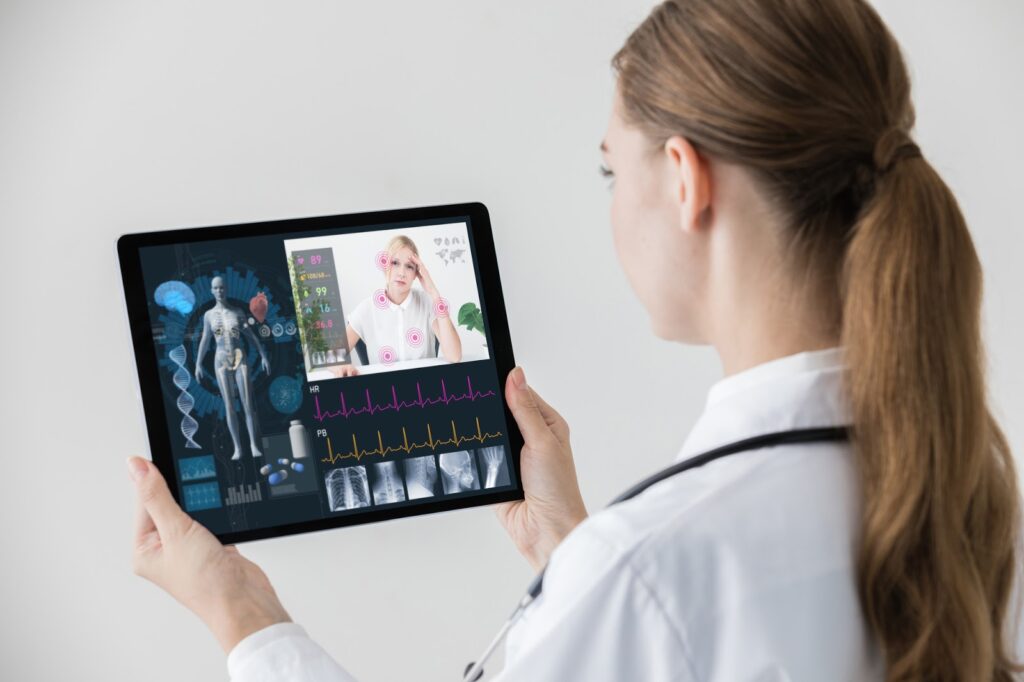Remote patient monitoring became particularly important over the last year. High-risk patients were able to avoid making hospital or doctors’ visits using these systems. mHealth Intelligence reported in 2019 that 88% of providers invested in remote monitoring technology.
The pandemic saw an increase in these numbers as doctors began to utilize these systems to help keep their patients safe. You can too. Read on to find out the advantages of using patient monitoring systems at your facility.
Types of Patient Monitoring Systems
Patient monitoring devices help you to effectively study, note, and analyze your patients’ conditions in real-time regardless of their location. They are particularly designed to keep track of the progression of some of the more prevalent diseases in the US including diabetes, hypertension, and heart disease.
Here are some of the remote patient monitors you can use to keep a close eye on your patients’ overall health.
Continuous Glucose Monitor
Continuous blood sugar monitoring is essential to prevent severe hypoglycemic episodes. All it takes is one drop of blood from your patient. The monitor does the rest. It monitors the effect of the following on blood sugar levels:
- Medication
- Stress
- Illness
- Diet
- Exercise
It also tracks the progress patients make toward treatment goals. They also keep patients and providers up-to-date with appointments.
Blood Pressure Monitor
These easy-to-use devices automatically calculate your patient’s heart rate and blood flow through an inflatable cuff. It fills with air and measures changes in the movement of a patient’s artery as it deflates. Multiple readings are possible with some devices and can provide you with a daily average for your patient.
Heart Rate Monitors
These track the beats of a patient’s heart per minute through a wearable device. It can help to determine the levels of exercise your patient should be doing as well as the amount of medication they need to take. It monitors your patient’s heartbeat while they do activities and even while they sleep.
This is important in detecting asymptomatic and symptomatic arrhythmias, syncope and presyncope, as well as atrial fibrillation after cardiac ablation.
Other remote monitoring devices include:
- Anticoagulation Testing Devices
- Electrocardiography (ECG) Devices
- Maternity Care Monitoring Devices
- Medical Alert Systems
- Pediatric Monitoring Devices
- Pulse Oximeters
- Medication Monitoring devices
- Smart Scales
Most of these are easy-to-use and simply require your patient to wear the device. You can find out more information about patient monitoring, as several companies provide these devices.
Importance of Patient Monitors
Patient monitoring devices along with other remote technology tools such as videoconferencing and telemedicine helped to keep many patients safe during the pandemic. They can continue to do so for your patients as well.
Here are some reasons they are so effective and important:
- Helps with early diagnosis of certain conditions
- Makes delivery of healthcare less stressful
- Reduces readmissions
- Helps improve doctor/patient relationships
- Provides a better understanding of a patient’s condition
Monitoring also helps patients have more control over their care. They will be more likely to follow doctor’s orders if they too know what data to take note of while monitoring is taking place.
Better Monitoring for Healthier Patients
If you’ve been wondering how to monitor patients more effectively, many of the systems mentioned above can help. They can assist in timely diagnosis, better healthcare management, and delivery.
If you’re uncertain where to start, Infinium Medical can assist. We provide medical facilities with state-of-the-art medical equipment including patient monitoring systems. Contact us today to find out more.

